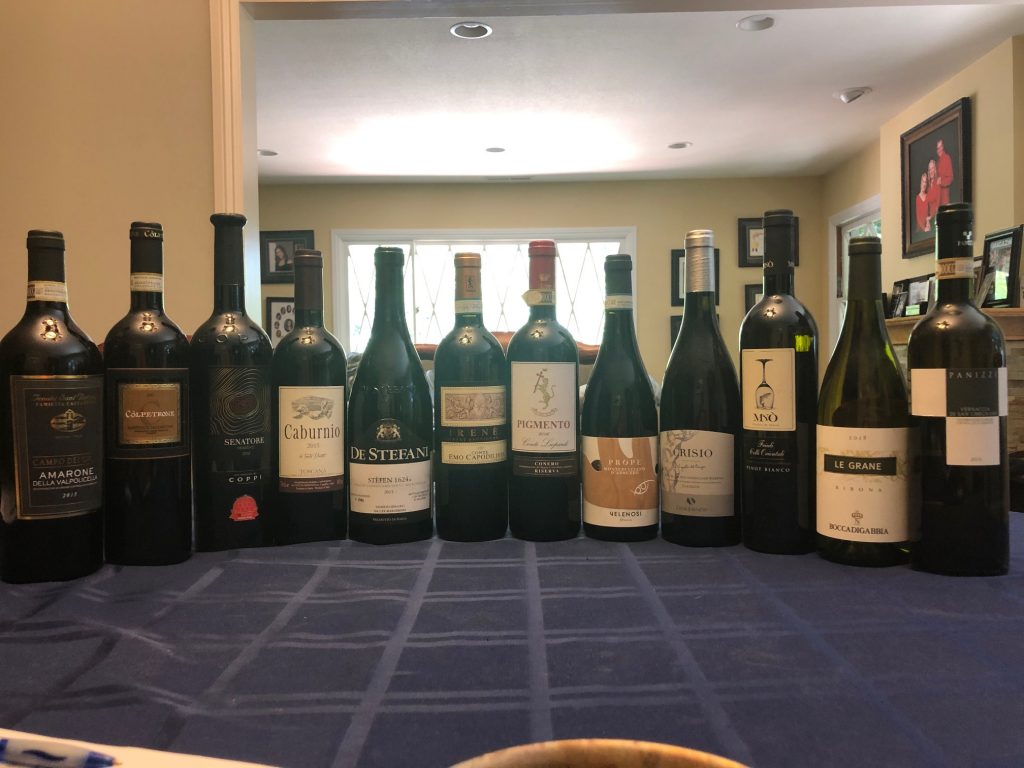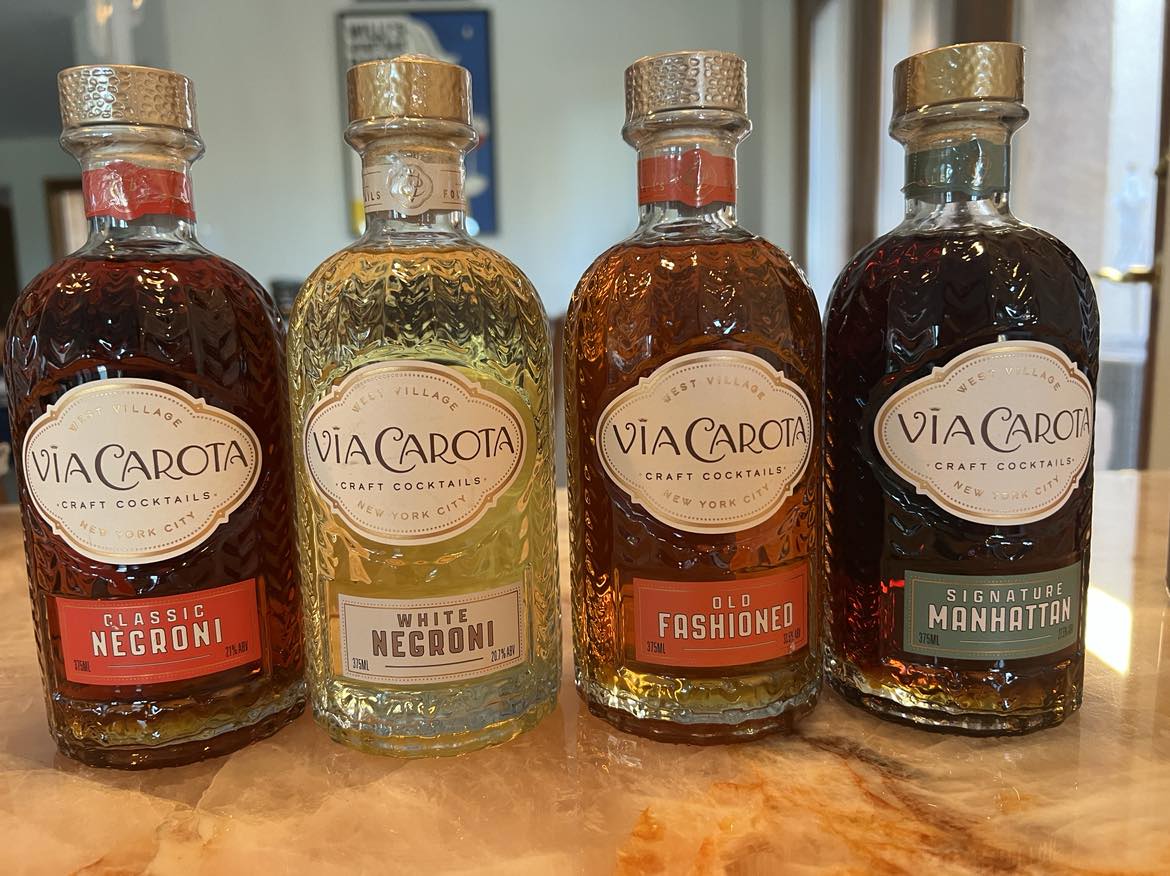Gambero Rosso is a huge name in Italian wines. They usually have walk around tastings for press, sommeliers, distributors and consumers. With Covid-19 ending all of that I had the remarkable luck to have been offered bottles from 12 wineries to review at home along with a live Master Class on Zoom.
 The Invitation
The Invitation
I’m writing with a special invitation to you on behalf of Gambero Rosso, the global authority on Italian wines and publisher of the annual Vini d’Italia (Italian Wines) guide. We would like to invite you to join a small group of U.S. wine writers and key wine trade for Gambero Rosso’s first-ever virtual Master Class, hosted by Marco Sabellico, the guide’s editor-in-chief.
…12 wines will be tasted and discussed, meaning you will receive 12 full bottles of wine…You would be one of just 25 hand-selected participants from the entire U.S. This will be an interactive experience, with opportunities for you to ask questions throughout the tasting…
Wine List and Notes (some are from the winery representatives/technical sheets, the tasting notes are mine and those marked with a plus sign + were my favorites. My husband Eddie joined me for the class.)
PANIZZI
+Vernaccia di S. Gimignano 2019
The name Gimignano on the label is the town in Tuscany where the Vernaccia grapes are grown. It’s not a very well-known wine grape but of top quality. This is their 30th vintage but back in the medieval times of the 12th century this wine was the most exported wine. The wines sees no time in oak, it’s all stainless steel. This vintage was described as “not very aromatic” though I found it quite lively with stone fruit and pineapple notes.
- BOCCADIGABBIA
Colli Maceratesi Ribona Le Grane 2018
The Ribona grapes, also known as Maceratino, are indigenous and grown in the Maceratesi area. They are 25 kilometers from the sea with both sandy and clay soils. The vineyards are 20 years old. According to the technical notes “whole grape berries, picked slightly over-ripe are added to the wine” following the first fermentation. I noted the salinity in the wine, due to the proximity to the sea air, fresh fruit, as well as an earthy quality.
- ZORZETTIG
FCO Pinot Bianco Myò 2018
This winery is in Fruili, and the Spessa vineyard is designated as historical and dates back to the 1950s. The grapes are harvested by hand within the first week of September. I found spice and bruised yellow Delicious apple notes. The tech sheets mentioned having this wine with light appetizers, fish, canapes, Adriatic crab with Arugula. The crab pairing sounded just perfect to me.
- CASALFARNETO
+Castelli di Jesi Verdicchio Cl. Crisio Ris. 2016
This was a reserve Verdicchio, grown close to the mountains, dating back to 1995. The wine had a rich mouthfeel with lots of citrus and apple notes. It normally spends some time in oak and a minimum one year in stainless steel. This 2016 has just been released. As it’s a reserve they are aged 18 months. Had it again, two days later, still fresh, vibrant, with tons of fruit.
- VELENOSI
++Montepulciano d’Abruzzo Prope 2016
This was my favorite wine in the tasting. I got notes of sweet ripe plums, crushed black cherry, black berry – and a developed maturity for being so young and not decanted. (We left it open and enjoyed it even more with dinner later.) It is 100% Montepulciano grapes, hand-picked mid-October, vineyards are in Controguerra, gravelly soil. The maceration period can extend four weeks according to the technical notes.
- CONTE LEOPARDI DITTAJUTI
+Conero Pigmento Ris. 2016
This 100% Montepulciano wine was harvested mid-November from a vineyard in Sirolo in the Conero area. That grapes are picked late harvest – early October to the end of November, barrique aging. Many of the experts in the class had decanted this Riserva Montepulciano wine, some up to 24 hours before, so we swirled like mad and really liked what we found: ripe fruit, forest floor, dusty and tannic.
- CONTE EMO CAPODILISTA – LA MONTECCHIA
Colli Euganei Cabernet Sauvignon Ireneo 2016
Another to decant, the wine is a blend of dried wine grapes including 90% Cabernet Sauvignon, 6% Merlot and 4% Carmenere, vineyards are 200 meters above sea level and in barrique barrels for 12 months. Because the grapes are dried, like an Amarone, there is more sugar and a higher alcohol content, 15.5%. They also freeze their yeast for fermentation for all of their wines. The wine was filled with dried fruit, olive, mint, balsamic and tannins. After more time in my glass it was earthier.
- DE STEFANI
+Colli di Conegliano Rosso Stefen 1624 2015
This wine is from the Marzemino grape, which is grown in the hillside 50 kilometers north of Venice. (One of the somms remarked that the Marzemino grape is related to the Lagrein grape.) The owner Alessandro De Stefani spoke to us about his wines, and is the fourth generation to run the family-owned winery. The wine was dry, dark, sweet with both honey and Port wine notes as it developed in the glass.
- TENUTA MONTETI
+Caburnio 2015
This is a blend of 50% Cabernet Sauvignon, 25% Alicante Bouschet and 25% Merlot, the percentages change with each vintage, 14% alcohol, no fining, no filtering and expected to age over 15 years according to the technical notes. The vineyards are in “the tail of Tuscany, at the coast.” It tasted older than five years to me as it was very balanced, dark fruit, earthy with a lovely nose. Would benefit from decanting too.
- COPPI
Gioia del Colle Primitivo Senatore 2015
This wine is from Puglia, chalk and clay soils, 100% Primitivo, handpicked the first 10 days of September, 12 months in Slavonian oak barrels, 13.5% alcohol. We noted that it was aromatic and tart, with raspberry and mint leaves. Most of the somms loved the wine. Fred Swan commented Primitivo has “the same DNA as Zinfandel. (They are) twins that grew up in different neighborhoods.”
- CÒLPETRONE
Montefalco Sagrantino 2012
Made with the Sagrantino grape in Umbria, this eight year old wine has the highest percentage of polyphenols in the world according to winery representative Giacomo Alari. Pungent, tart, mushroom and tannic – the wine could probably go a few days in an opened bottle for added depth.
- TENUTA SANT’ANTONIO
+Amarone della Valpolicella Campo dei Gigli 2015
Sant’Antonio is known as the father and protector of the poor. Gigli is the name of a flower from the region in Verona. The vines are 40 years old, three months of raisining, three years in new casks. Another favorite in the tasting, and our last. The dried grapes that made up this Amarone offered huge aromatics and flavors, including a nice black cherry.
Facebook links:
Boccadigabbia
CasalFarneto
Còlpetrone
Az. Agr. Conte Emo Capodilista
Vini Coppi
De Stefani
Panizzi
Tenuta Monteti
Tenuta Sant’Antonio
Velenosi Vini
Zorzettig Vini
Eve Bushman has a Level Two Intermediate Certification from the Wine and Spirits Education Trust (WSET), a “certification in first globally-recognized course” as an American Wine Specialist ® from the North American Sommelier Association (NASA), Level 1 Sake Award from WSET, was the subject of a 60-minute Wine Immersion video (over 16k views), authored “Wine Etiquette for Everyone” and has served as a judge for the Long Beach Grand Cru and the Global Wine Awards. You can email Eve@EveWine101.com to ask a question about wine or spirits.










